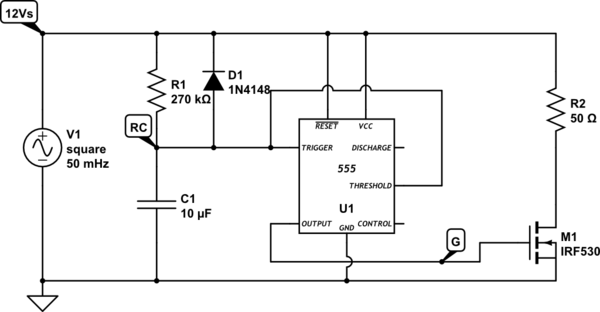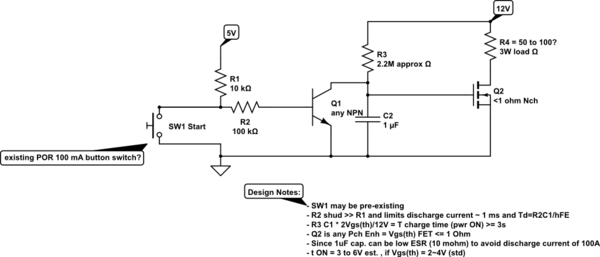I have server that won't power up.
I found that if I connect a 50Ω load to the +12 VDC output of the power supply everything works fine.
I only need this additional loading for about three seconds.
I need to momentarily load the +12 VDC rail for about three seconds and then remove the load. I've tried using an N-channel depletion MOSFET with an RC network to the gate of the N-Channel MOSFET but that didn't work.
(The normally closed N-channel depletion MOSFET stayed 'closed.')
I then found that the gate to source voltage needed to be about -2.0 VDC in order for the N-channel depletion MOSFET to “turn off”.
Do you know how I can create a load switch that will be “closed” for about 3 seconds and then “open?"



